Toyota Tundra Vs Ford F-150: How Do These Hybrid Pickups Stack Up?

Toyota has finally updated the Tundra, with hybrid power no less, and that puts the F-150 square in its sights.
It’s honestly a little surprising it’s taken so long for Toyota, the company known for hybrids, to add battery power to its pickup. The Ford F-150 did it first, introducing the PowerBoost model last year. Now both trucks feature turbocharged 3.5-liter V6s with plenty of electron-assisted torque.
Despite that similarity, there’s a whole world of difference between the best-selling F-150 and the third-generation Tundra—and that’s only what we know so far. For first-hand experience of the 2022 Tundra, read our hands-on preview (and the five things that stand out on the new pickup). As for how these two light-duty pickups compare on paper, read on.
Get a Quote on a New Toyota Tundra or Ford F-150Cabin Space
Tundra: Toyota hasn’t released interior measurements for the 2022 Tundra yet. What we can tell you is that it comes in both Double Cab and CrewMax forms. We poked around the CrewMax versions of the truck and found it quite spacious. It’ll take some doing to beat the capacious F-150 however, specifically in the rear row. Toyota will offer a panoramic sunroof in the 2022 Tundra, and the model’s unique power-operated rear window remains.
F-150: On average, the latest F-150 is the most spacious rig in the class. What will the Tundra need to beat the Blue Oval? At least 40.8 inches (1,036 millimeters) of front headroom, and 40.4 inches (1,026 mm) in the rear. Legroom is also stretch-friendly, measuring in at 43.9 and 43.6 inches (1,115 and 1,107 mm), respectively.
The F-150 also offers the most room in the class when measured across. Shoulder room is 66.7 inches up (1,694 mm) front, and 66.0 inches (1,676 mm) in the back; hip room is 62.5 and 62.6 inches (1,588 and 1,590 mm), respectively.
Note that all of these figures come from the short-bed crew-cab version of the F-150.
Bottom Line: We doubt the Toyota will eclipse the spacious F-150 on all fronts. But until we get the actual numbers, it’s impossible to tell.
Cargo Space and Towing
Tundra: Toyota will offer the Tundra in 5.5-, 6.5-, and 8.1-foot bed lengths. With the hybrid powertrain (ahem, i-Force MAX), it’s rated to a maximum of 12,000 pounds (5,443 kilograms) of towing capacity in CrewMax form. Maximum payload sits at 1,940 lb (880 kg). We don’t yet know what those figures are for the regular turbocharged V6 version of the 2022 Tundra.
F-150: To keep this playing field level, we’re only comparing the F-150 PowerBoost hybrid—for now. Ford rates its hybrid model at 2,120 pounds (962 kg) of payload capacity for the crew-cab model. Its towing capacity is 12,700 pounds (5,761 kg). It’s important to note that isn’t the top rating for the F-150 lineup.
Bottom Line: There’s no other way to say it: the F-150 trumps the Tundra in both payload and towing capacity when both are hybrids.
Powertrains
Tundra: As mentioned above, the Tundra will now come with an available hybrid powertrain. The i-Force Max pairs a twin-turbo 3.5-liter V6 with an electric motor pulling power from a 1.87-kWh battery. Combined outputs are a healthy 437 horsepower and 583 pound-feet of stump-pulling torque. All this funnels through a 10-speed automatic transmission. The i-Force Max comes standard on the TRD Pro, and is optional on most other trims.
The standard engine on the rest of the lineup is the 3.5-liter V6 on its own. This “base” engine serves up 389 hp and 479 lb-ft.
F-150: The PowerBoost is the closest direct competitor to the Tundra’s hybrid powertrain. Also displacing 3.5 liters and breathing via two snails, it serves up 430 hp and 570 lb-ft of torque. Just like the Toyota, the Ford uses a 10-speed automatic transmission here.
However, F-150 buyers have myriad other engine options to choose from, depending on trim. The base engine is a naturally-aspirated 3.3-liter V6, spitting out 290 hp and 265 lb-ft. Moving up the gas lineup finds a 2.7-liter EcoBoost V6 (325 hp / 400 lb-ft), 5.0-liter V8 (400 hp / 410 lb-ft), and 3.5-liter EcoBoost V6 (400 hp / 500 lb-ft). There’s also a 3.0-liter Power Stroke V6 diesel, producing 250 hp and 440 lb-ft.
SEE ALSO: 2022 Hyundai Tucson Hybrid Review: Stylin’ On YouBottom Line: In terms of output, the new Tundra is the new class leader, both in terms of “base” engines and the top optional motor. Not counting the Ram TRX or Ford F-150 Raptor, as those are specialized trucks. The F-150 has the most options, which should allow it to better suit buyers’ needs, however.
Fuel Economy
Tundra: Toyota hasn’t published any EPA fuel economy figures yet. With the switch to a smaller turbo-V6 and an additional four cogs in the ‘box, we expect it to post competitive figures in both gas-only and hybrid form. For reference, the current V8 model scores just 13 mpg city and 17 mpg highway in both 2WD and 4WD forms. The rear-drive 2021 Tundra scores 15 mpg combined, while the 4WD model sits at 14 mpg.
F-150: The 2021 F-150 PowerBoost, in two-wheel-drive form, hits 25 mpg city and 26 mpg highway, for a combined 25 mpg. Check the box for 4WD and all three numbers land on 24 mpg. Gas engines get close to that figure on the highway, but post numbers around 25-percent worse around town.
Bottom Line: Toyota’s penchant for high hybrid mileage means we expect the Tundra to come in right around the F-150. We’ll know more in the coming months.
SEE ALSO: Toyota RAV4 vs Honda CR-V: Which Crossover Is Right For You?Safety
Tundra: Toyota has switched over to electronic power steering with the 2022 Tundra, which allows it to include its latest suite of driver assists, dubbed Toyota Safety Sense 2.5. The robust lineup includes automated emergency braking with pedestrian detection, lane-keep assist, lane-departure warning (with steering assist), adaptive cruise control, auto high beams, blind-spot monitoring, rear cross-traffic alert, and road sign assist.
Best of all? TSS 2.5 is standard on every single trim.
Naturally, we have yet to see crash test results from the National Highway Traffic Safety Administration (NHTSA) or Insurance Institute for Highway Safety (IIHS).
F-150: Ford doesn’t pack as many standard features into the F-150; unsurprising given its likely lower starting price. Still, you’ll find automatic headlights, forward collision warning with braking, automated emergency braking (with pedestrian detection), hill-start assist, and a rear view camera with dynamic hitch support. Available driver assists include the usual blind-spot monitoring with rear cross-traffic alert, adaptive cruise control, sign recognition, intersection assist, and lane-keep assist. You’ll also find an active park assist, and Pro Trailer Backup Assist.
The NHTSA awarded the F-150 a full five-star rating for its battery of crash tests. The IIHS hadn’t fully tested the F-150 at the time of writing.
SEE ALSO: Ford Ranger vs Toyota Tacoma: Which Mid-size Pickup is Right For You?Bottom Line: The Santa Cruz is better-specced from the beginning of the lineup through to the end of it. There’s got to be a reason it costs more, and that’s one of them.
Styling
Tundra: Well, it’s not subtle, the new Tundra. Toyota has taken the big-grille trend to what we hope is its zenith, especially in TRD Pro form. That said, we like certain aspects of the design, like the comparatively low nose, the negative space above the wheel arches, and the three-dimensional nature of the new taillights.
F-150: More evolutionary than revolutionary, the latest F-150 tweaks and massages the styling of the 10th-generation model. It hasn’t grown much in any one direction, and maintains that now-iconic stepped window line. The changes to the styling have visually lowered the nose, which improves visibility.
SEE ALSO: Subaru Forester vs Nissan Rogue: Which Compact Crossover is Right for You?Bottom Line: Looks are always subjective, and that’s before you consider how fiercely loyal truck buyers are. Chances are, you already have a fave here.
Pricing and Value
Tundra: Toyota has yet to price the 2022 Tundra. We expect it to start higher than the base F-150, on account of it including so much additional equipment. How the Japanese giant prices the i-Force Max models against their respective Blue Oval trims will be very interesting.
F-150: The 2021 F-150 lineup starts at $30,985, including destination. For that sum buyers will find a regular cab, 6.5-foot bed model with a 3.3-liter V6 underhood, sending power to just the rear (steelie) wheels.
For the purposes of this comparison, we’ll focus in on the EcoBoost and PowerBoost drivetrains. The absolute cheapest way into the latter is the $43,190 XL, with a SuperCrew cab, 5.5-foot bed, and rear-wheel drive. A mid-level Lariat with the same body style rings up at $50,500 for the EcoBoost 3.5L, and $52,400 for the PowerBoost hybrid. At the top of the pile is the lux Limited, at $74,800 in EcoBoost form and $76,700 for the PowerBoost.
Bottom Line: It’s impossible to call this one yet. Ford has sheer volume on its side, and the low price of entry.
In Conclusion
As you can see, from what we know of the Tundra so far, it comes close to the F-150 in terms of powertrain and towing capacity. Toyota has promised a much more modern ride and handling balance for its big rig too, especially with the available rear air suspension.
Is it enough to recommend the Japanese rig over America’s best-selling vehicle? That’ll be a hard sell, but we’ll have a better idea of what the 2022 Tundra is really all about when we drive it in a matter of weeks. Then we’ll know for sure if the Tundra is a serious threat to the F-150—and the rest of the Big Three.
Become an AutoGuide insider. Get the latest from the automotive world first by subscribing to our newsletter here.

Kyle began his automotive obsession before he even started school, courtesy of a remote control Porsche and various LEGO sets. He later studied advertising and graphic design at Humber College, which led him to writing about cars (both real and digital). He is now a proud member of the Automobile Journalists Association of Canada (AJAC), where he was the Journalist of the Year runner-up for 2021.
More by Kyle Patrick



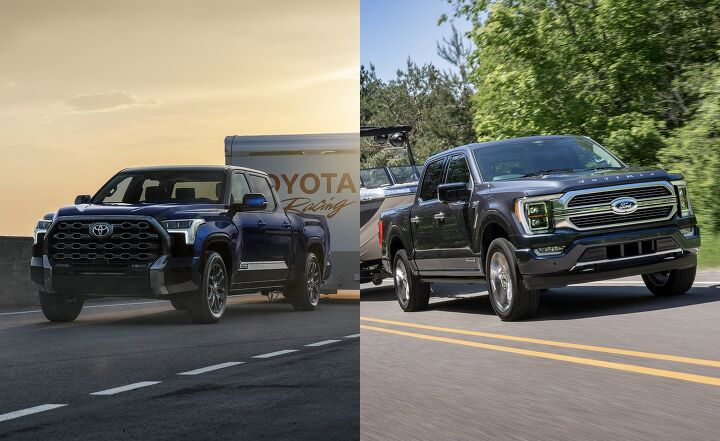


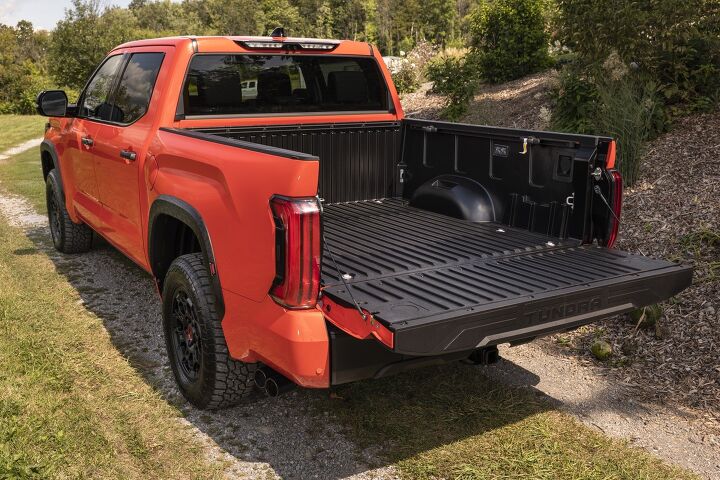


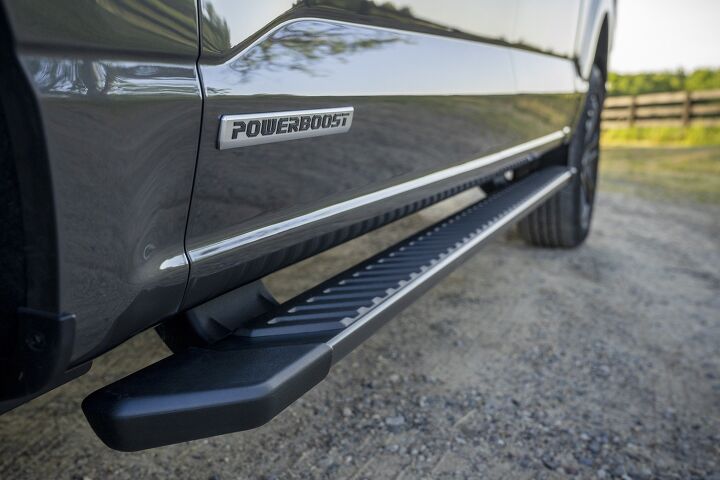



















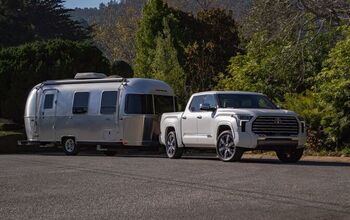
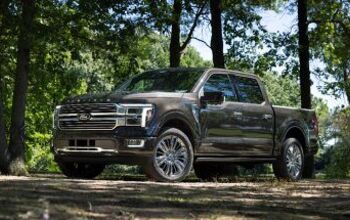
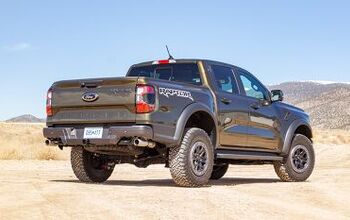




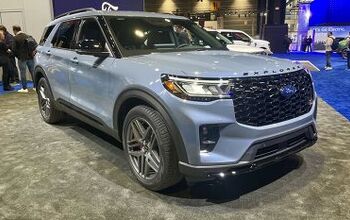

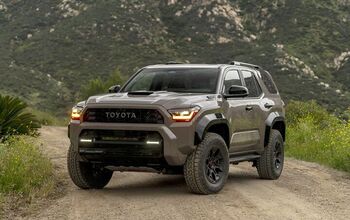

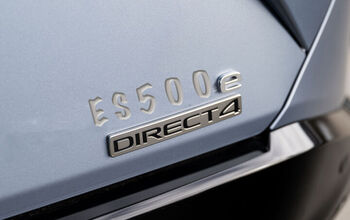



Comments
Join the conversation